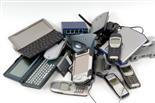
Waste Electronic and Electrical Equipment:
The legislation was introduced to enforce the correct disposal of electrical waste. In June 2006 a new law made it compulsory for manufacturers and retailers of electrical goods to contribute financially to the disposal of Waste Electronic Electrical Equipment.
Retailers are obligated to inform customers of details of the take-back schemes they provide.
Why is collection of WEEE important?
- 340,000 tonnes of waste computers were dumped last year
- Cathode Ray Tubes have phosphorus coating that is toxic. The metals and toxins in the tubes need to be separated and correctly disposed of 30,000 tonnes of tubes go into UK landfill sites annually
- In 2012, 10 million pieces of electronic equipment were scrapped
- 3 million fridges are scraped annually. Fridges contain chemicals that contribute to the green house effect. These chemicals are chlorofluro-carbons and Hydrochlorofluro-carbons
- Most electrical equipment uses plastic components, plastic is not easily degradable and is a growing problem at UK landfill sites
Methods used to recycle electrical goods.
- Equipment Dismantling - manual separation of re-usable and recyclable components.
- Mechanical Recycling - removal of hazardous components.
- Incineration and Refining - When a component is incinerated the unwanted materials are burned away leaving the metals that are needed. The metals are then refined to make them pure for re-use.
- Chemical Recycling - Gold and Silver can be removed from already printed circuit boards using a chemical process.
- If plastic is correctly separated from electrical items it can be shredded and re-used to produce garden furniture, fleeces, Coat hangers etc.